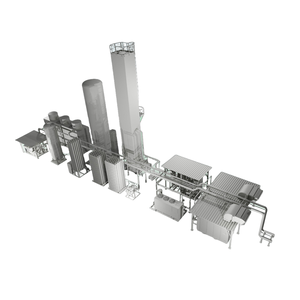
All categories
Featured selections
Trade Assurance
Buyer Central
Help Center
Get the app
Become a supplier

(2732 products available)




















An air compressor is a machine that uses power to convert electricity, gasoline engines, or diesel engines into pressurized air. Air compressors 200 bar, also known as high-pressure air compressors, are designed to produce high volumes of air at high pressure(200bar is equivalent to 20,000kpa). High-pressure air can be used for various applications such as underwater welding, shotcrete, and underwater rock drilling. Below are some typical kinds of high-pressure air compressors.
Piston Compressors
Piston compressors with reciprocating compressors are still the most common models. Piston compressors are built with durable materials and have generous warranty periods. Piston compressors work by having a piston move up and down to create chambers that suck air in and release compressed air. Piston air compressors are available in single-stage or two-stages.
Pistonless Compressors
Pistonless compressors are called scroll or screw compressors. Unlike rotary compressors, scroll compressors can have their chambers fabricated in a fixed spiral, which allows the air to move through the spiral and be compressed. Rotary screw compressors support their rotors through air pressure and bearings. These compressors are efficient, dynamic, and capable of running continuously for long periods without interruption or need for routine maintenance. Scroll compressors tend to be quieter than screw compressors. Rotary compressors are suitable for high demands because they can work for a long time without a need for interruption.
Centrifugal Compressors
Centrifugal compressors are great for extremely high flow applications. They usually offer a middle and double-stage compression. Centrifugal compressors are designed to use a rotating impeller to accelerate the gas or air. After that, it is decelerated in a diffuser, where the kinetic energy is changed into the pressure of the gas. The compact design of centrifugal compressors allows them to easily reach high flow rates and pressures. For this reason, they are usually used in large industrial facilities, construction offices, power stations, and offshore oil extraction platforms.
The specifications of an air compressor with 200 bars differ depending on the type and model. Some key specifications are as follows:
Regular maintenance is crucial to keeping the functionality and efficiency of 200 bar air compressors. Following are some necessary yet easy-to-do maintenance tips:
The 200-bar air compressor has various applications across multiple industries, including mining, automotive, manufacturing, oil and gas, underwater exploration, firefighting, construction, power generation, and infrastructure maintenance.
When choosing an air compressor 200 bar, it is essential to consider some factors such as the application used, the power, and the fuel type.
Application
It is important to match the air compressor's pressure and flow with the specific requirements of the intended application. Different tasks may have varying needs in terms of the tightness and volume of compressed air.
Power
Users need to consider the amount of work needed to be done and the situation in which the air compressor will be used before searching for the fuel source. It is important to ask whether a diesel air compressor or a petrol air compressor is more applicable. For outdoor and remote locations, a diesel or gasoline-powered air compressor may be more suitable because of its portability and autonomy.
Q1 What are the main uses of air compressors
A1 Air compressors are used in a wide range of applications that require the generation of high-pressure air. Common uses include the inflation of tires and sports equipment; the powering of pneumatic tools such as drills, wrenches, and hammers; the packaging and sealing of products; the spraying of paints, coatings, or adhesives; the filling of gas cylinders; the driving of staples and fasteners; the cleaning of workspaces and equipment using air blasts; initiating pneumatic control devices; and aiding in the production of food and beverages.
Q2 What is the difference between a 2-stage air compressor and a 1-stage compressor?
A2 A 2-stage air compressor has two cylinders. In comparison, a 1-stage air compressor has only one. The two cylinders in a 2-stage air compressor compress air two times. First, in the low-pressure cylinder and then in a high-pressure cylinder. Because of this, a 2-stage air compressor is able to generate more pressure, more airflow, and more premium tools compared to 1-stage air compressors. However, 2-stage air compressors are bigger and use more electricity.
Q3 What does the ""bar"" mean in air compressors?
A3 The term “bar” in air compressors refers to the unit of pressure. One bar is equal to 14.5 pounds per square. It is used to measure the pressure produced by the air compressor. Other units that are used to measure air compressor pressure are psi and kg/cm.